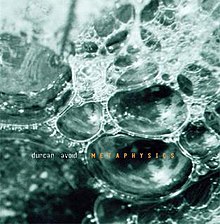T세포수용체수정
T cell receptor revisionT세포 수용체 수정기(대체 용어: 항원 수용체 편집기)는 성숙한 T세포가 재배열된 T세포 수용체(TCR)를 바탕으로 원래의 항원 특이성을 변화시키기 위해 사용하는 말초 면역계의 과정이다.이 프로세스self-reactive T세포의 몸에 연속 출현 thymus[1]의 중앙 관용 매커니즘 혹은 더 좋고, 따라서 주변 허용 오차-각각의 정도는 아직 완벽히 이해하지 못 했습니다. 기여하는 반면에 그런self-reactive Tcells[2]을 제거하는 것으로 통제되지 않거나 이어질 수 있다.[3][4][5]이 과정은 림프절 생식선 중심에서 모낭 도우미 T세포 형성 중에 발생한다.[6][7]
T세포 개정은 CDR 시퀀스의 주변 및 무작위 재결합에서 T세포 활성화 후 재결합 효소 RAG1 및/또는 RAG2의 재활성화를 통해 달성된다.교정 후 주변 T세포 레퍼토리는 흉선에서 생성되는 자기강화성 및 자기MHC 제한 T세포 레퍼토리의 모든 필수적 특징을 강화하는 동시에 자기강화 신호에 대응하여 외국 항원에 대한 반응성, 동태적 확산성 등 모든 특징을 유지하고 있다.[5]
T세포 특이성 규제 배경
초기 다양화 과정(자연의 V(D)J 재조합 또는 유전자 변환 및 뉴클레오티드 덧셈)은 1차 림프구(시무스)에서 발생하며 TCR의 매우 높은 다양성(> 1014)으로 이어져 거의 모든 항원 구조/시퀀스를 인식할 수 있다.적응 면역의 패러다임은 하나의 T세포가 흉선에서만 교육되고 흉선의 출구에서는 수정할 수 없는 독특하고 결정적인 항원 특이성을 가진 단 하나의 TCR만을 표현할 수 있다는 것이다.이중 수용체 T세포가 주변부에 존재하며 단일 수용체 T세포가 그 특이성을 수정하거나 거기서 두 번째 TCR을 되찾을 수 있기 때문에 정확하지 않다.[8][9][10]자기 구조(펩타이드/MHC 복합체)를 인식하는 T세포는 중앙 내성 과정에서 흉선에서 즉시 제거되지만, 다시 100% 효과적이지는 않다.그 결과 흉선에서 주변부로 이주해 세포독성, 도우미 활동 등 그곳에서 이펙터 기능을 수행하는 자가반응 T세포가 많아 결국 자가면역성으로 이어진다.말초 내성은 2차 림프구 장기, 혈액 순환 및 모든 비임파 조직에서 그러한 자가 활성 T 세포를 다른 방법으로 제어하는 메커니즘이다.TCR 개정 과정은 우리가 이전에 예상했던 것보다 훨씬 더 높은 T세포 가소성을 발생시키고 있다.
TCR 개정 증거
활성화에 의존하는 T세포 수정과정은 새로운 TCR 특이성이 마우스 유전자변형[11] 및 마우스 클릭 모델[12][13] 또는 마우스나 인간의[13][14] 자기반응형 재래식 T세포에서 설명한 대로 자동소거특성을 상실하는 경우 주변 허용오차 메커니즘의 일부다.[15]이 과정은 무작위적이기 때문에 초기에는 자체 반응성이 없는 T세포에서 노보 활성 TCR의 탈노보 외관을 유도하거나 T 규제세포와 Th17세포[16] 또는 감마/델타, 알파/베타 T세포와 같은 T세포 라인 간을 전환할 수도 있다.[17]
현재 T세포와 B세포 모두에서 항원 수용체 편집에 관한 지식은 완전하지는 않지만, 그것은 면역학의 중심 독단인 적응성 면역세포의 통제, 그들의 특이성 및 조절에 필수적인 영향을 미친다.
참조
- ^ Vaitaitis, Gisela M.; Poulin, Michelle; Sanderson, Richard J.; Haskins, Kathryn; Wagner, David H. (Apr 1, 2003). "Cutting edge: CD40-induced expression of recombination activating gene (RAG) 1 and RAG2: a mechanism for the generation of autoaggressive T cells in the periphery". Journal of Immunology. 170 (7): 3455–3459. doi:10.4049/jimmunol.170.7.3455. ISSN 0022-1767. PMID 12646605.
- ^ Simmons, Kalynn B.; Wubeshet, Maramawit; Ames, Kristina T.; McMahan, Catherine J.; Hale, J. Scott; Fink, Pamela J. (2012). "Modulation of TCRβ surface expression during TCR revision". Cellular Immunology. 272 (2): 124–129. doi:10.1016/j.cellimm.2011.10.022. ISSN 1090-2163. PMC 3244515. PMID 22138498.
- ^ Mostoslavsky, Raul; Alt, Frederick W. (Jun 2004). "Receptor revision in T cells: an open question?". Trends in Immunology. 25 (6): 276–279. doi:10.1016/j.it.2004.04.001. ISSN 1471-4906. PMID 15145316.
- ^ Wagner, David H. (Apr 2007). "Re-shaping the T cell repertoire: TCR editing and TCR revision for good and for bad". Clinical Immunology (Orlando, Fla.). 123 (1): 1–6. doi:10.1016/j.clim.2006.08.006. ISSN 1521-6616. PMID 16990051.
- ^ a b Hale, J. Scott; Fink, Pamela J. (Apr 2010). "T-cell receptor revision: friend or foe?". Immunology. 129 (4): 467–473. doi:10.1111/j.1365-2567.2010.03250.x. ISSN 1365-2567. PMC 2842493. PMID 20201984.
- ^ Cooper, Cristine J.; Turk, Gail L.; Sun, Mingyi; Farr, Andrew G.; Fink, Pamela J. (Dec 1, 2004). "Cutting edge: TCR revision occurs in germinal centers". Journal of Immunology. 173 (11): 6532–6536. doi:10.4049/jimmunol.173.11.6532. ISSN 0022-1767. PMID 15557142.
- ^ Higdon, Lauren E.; Deets, Katherine A.; Friesen, Travis J.; Sze, Kai-Yin; Fink, Pamela J. (Apr 15, 2014). "Receptor revision in CD4 T cells is influenced by follicular helper T cell formation and germinal-center interactions". Proceedings of the National Academy of Sciences of the United States of America. 111 (15): 5652–5657. Bibcode:2014PNAS..111.5652H. doi:10.1073/pnas.1321803111. ISSN 1091-6490. PMC 3992682. PMID 24706795.
- ^ He, Xin; Janeway, Charles A.; Levine, Matthew; Robinson, Eve; Preston-Hurlburt, Paula; Viret, Christophe; Bottomly, Kim (Feb 2002). "Dual receptor T cells extend the immune repertoire for foreign antigens". Nature Immunology. 3 (2): 127–134. doi:10.1038/ni751. ISSN 1529-2908. PMID 11812989. S2CID 23163549.
- ^ Morris, Gerald P.; Allen, Paul M. (Jun 1, 2009). "Cutting edge: Highly alloreactive dual TCR T cells play a dominant role in graft-versus-host disease". Journal of Immunology. 182 (11): 6639–6643. doi:10.4049/jimmunol.0900638. ISSN 1550-6606. PMC 3196624. PMID 19454656.
- ^ Ni, Peggy P.; Solomon, Benjamin; Hsieh, Chyi-Song; Allen, Paul M.; Morris, Gerald P. (Aug 15, 2014). "The ability to rearrange dual TCRs enhances positive selection, leading to increased Allo- and Autoreactive T cell repertoires". Journal of Immunology. 193 (4): 1778–1786. doi:10.4049/jimmunol.1400532. ISSN 1550-6606. PMC 4119549. PMID 25015825.
- ^ McMahan, C. J.; Fink, P. J. (November 1998). "RAG reexpression and DNA recombination at T cell receptor loci in peripheral CD4+ T cells". Immunity. 9 (5): 637–647. doi:10.1016/s1074-7613(00)80661-5. ISSN 1074-7613. PMID 9846485.
- ^ Huang, Ching-Yu; Golub, Rachel; Wu, Gillian E.; Kanagawa, Osami (Apr 1, 2002). "Superantigen-induced TCR alpha locus secondary rearrangement: role in tolerance induction". Journal of Immunology. 168 (7): 3259–3265. doi:10.4049/jimmunol.168.7.3259. ISSN 0022-1767. PMID 11907080.
- ^ a b Takase, Mitsuyo; Kanagawa, Edith M.; Kanagawa, Osami (Aug 15, 2007). "Age-dependent TCR revision mediated by interaction between alphabeta TCR and self-antigens". Journal of Immunology. 179 (4): 2163–2169. doi:10.4049/jimmunol.179.4.2163. ISSN 0022-1767. PMID 17675475.
- ^ Bynoe, Margaret S.; Viret, Christophe; Flavell, Richard A.; Janeway, Charles A. (Feb 22, 2005). "T cells from epicutaneously immunized mice are prone to T cell receptor revision". Proceedings of the National Academy of Sciences of the United States of America. 102 (8): 2898–2903. Bibcode:2005PNAS..102.2898B. doi:10.1073/pnas.0409880102. ISSN 0027-8424. PMC 549496. PMID 15708975.
- ^ Lantelme, Erica; Orlando, Luca; Porcedda, Paola; Turinetto, Valentina; De Marchi, Mario; Amoroso, Antonio; Mantovani, Stefania; Giachino, Claudia (Jan 2008). "An in vitro model of T cell receptor revision in mature human CD8+ T cells". Molecular Immunology. 45 (2): 328–337. doi:10.1016/j.molimm.2007.06.153. ISSN 0161-5890. PMID 17659780.
- ^ Zehn, Dietmar; Bevan, Michael J.; Fink, Pamela J. (Nov 1, 2007). "Cutting edge: TCR revision affects predominantly Foxp3 cells and skews them toward the Th17 lineage". Journal of Immunology. 179 (9): 5653–5657. doi:10.4049/jimmunol.179.9.5653. ISSN 0022-1767. PMC 2776039. PMID 17947636.
- ^ Ziegler, Hendrik; Welker, Christian; Sterk, Marco; Haarer, Jan; Rammensee, Hans-Georg; Handgretinger, Rupert; Schilbach, Karin (2014). "Human Peripheral CD4(+) Vδ1(+) γδT Cells Can Develop into αβT Cells". Frontiers in Immunology. 5: 645. doi:10.3389/fimmu.2014.00645. ISSN 1664-3224. PMC 4329445. PMID 25709606.


